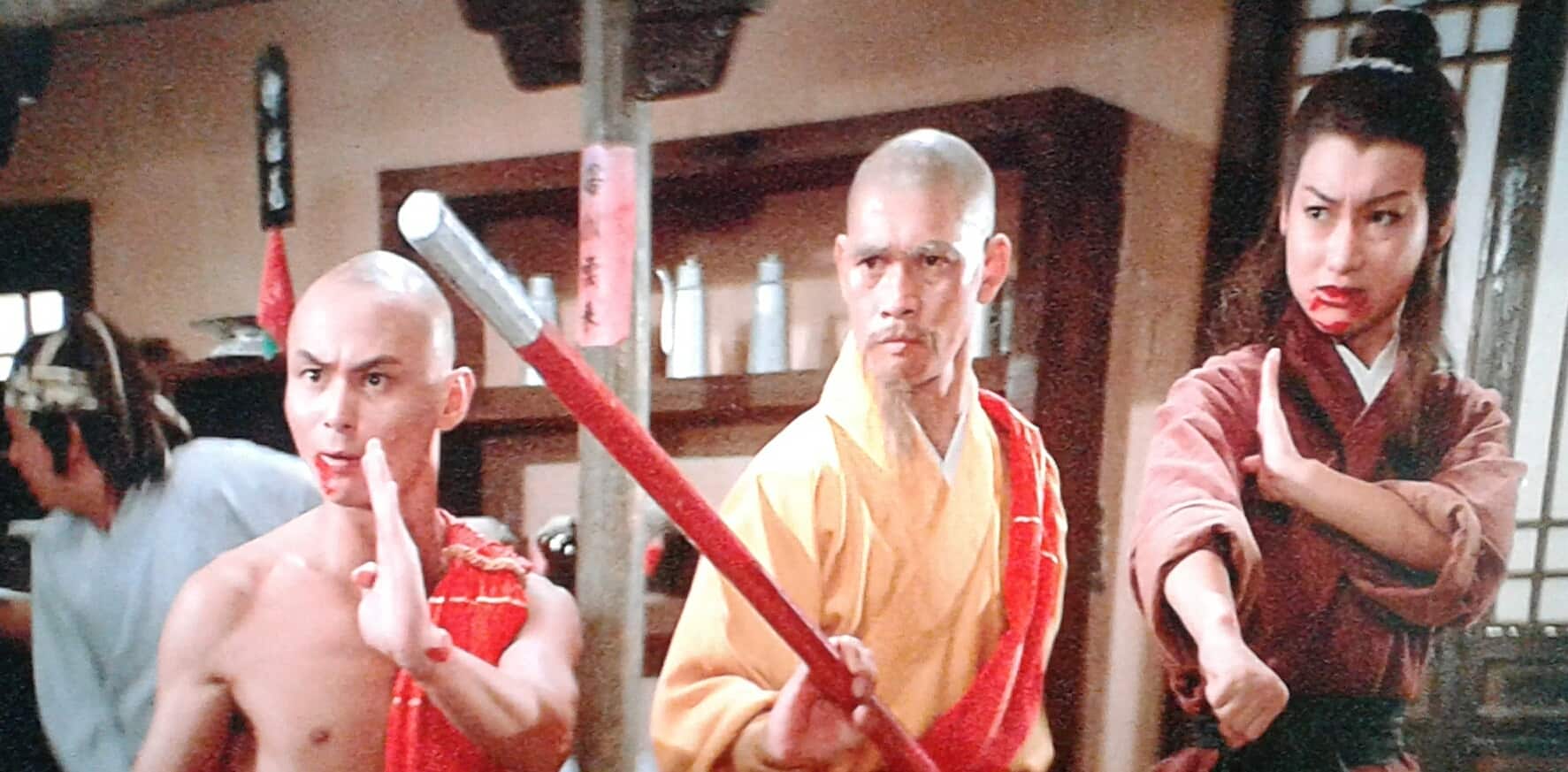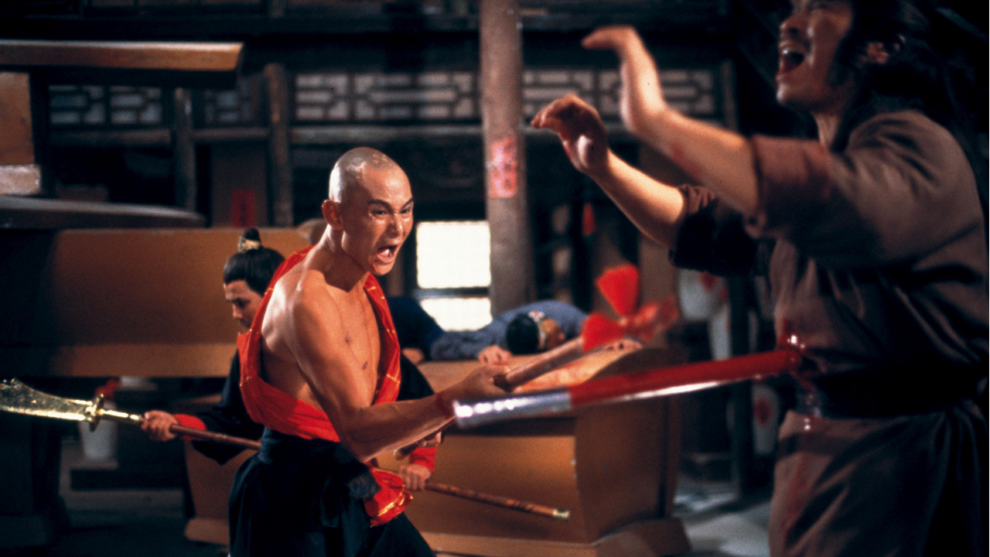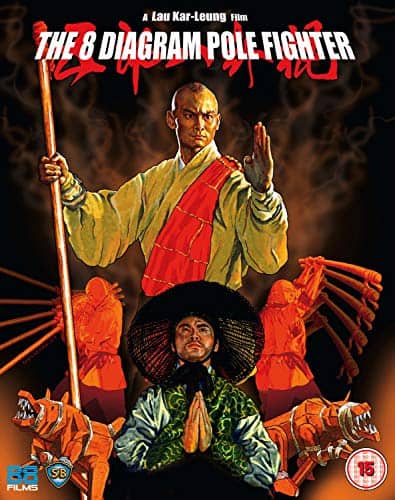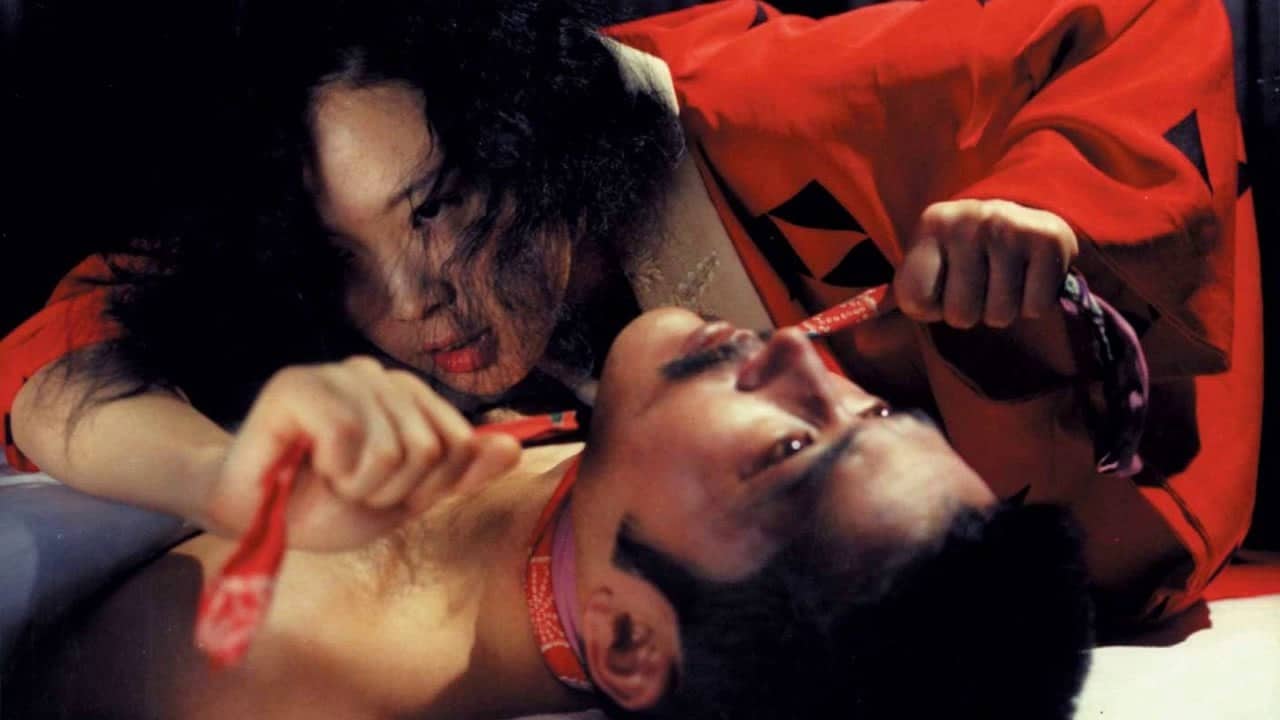Shaw Brothers is a company that needs little introduction to fans of kung fu, responsible as it was for genre-defining films such as “Five Deadly Venoms” (1978), “The 36th Chamber of Shaolin” (1978) and the subject of this review, “Eight Diagram Pole Fighter” (1984). The movie was produced by Mona Fong and the Shaw Brothers. It was directed by Lau Kar-leung, who was also the martial arts choreographer for the film and co-wrote the script with Kuang Ni.
Buy This Title
Kar-leung was a long-time collaborator of Gordon Liu, who starred in several notable titles which he directed, including “The 36th Chamber of Shaolin”, “Legendary Weapons of China” (1982) and “Eight Diagram Pole Fighter”. Liu's co-star in the movie, Alexander Fu Sheng, another prolific Shaw Brothers actor, was sadly killed in a road-accident during filming, which meant his role was partly re-written and consequently Liu is the main protagonist. The film was nominated at the 4th Hong Kong Film Awards in the category ‘Best Action Choreography'.
“Eight Diagram Pole Fighter” is loosely based around the historical folklore of The Generals of the Yang Family, who have been immortalised in ten centuries of Chinese literature for their military exploits. These included twice defeating invasions of the Northern Han Kingdom by the Song dynasty and, latterly having then sworn allegiance to the Song emperor Taizong, repeatedly repelling incursions from the North by the Khitan people of the Liao Dynasty (referred to in the film as ‘Mongols'). According to the folklore, the jealous Song general Pan Renmei conspired with the Liao army to lure and ambush the Yang family, resulting in the death of the three eldest sons, the suicide of Yang Ye and the subsequent death of the seventh son at the hands of Pan Renmei.
The movie begins with the Song general Yang and his seven sons being ambushed at Golden Beach, where all are killed or captured except the fifth and sixth sons, and Yang himself, who commits suicide. Fifth Brother (Liu) escapes and seeks refuge in a monastery at the sacred Mount Wutai, while Sixth Brother (Fu Sheng) returns home to his mother and two sisters but is severely traumatised and has become hysterical. Learning of his betrayal, Fifth Brother vows revenge against the traitor Pun Mei (modelled on Pan Renmei), and devotes himself to becoming a monk, combining the Yang family spear technique with the monks' stick-fighting to evolve the Eight Diagram Pole method. Meanwhile, learning of Fifth Brother's survival, the Eighth sister (Kara Hui) is sent to find him, setting up one of the most memorable final showdowns in kung-fu history!
Kar-leung directs a film which follows the classic kung fu formula: It begins by laying a foundation of betrayal, before moving on to the protagonist's meticulous preparation for revenge, and the eventual exacting of his vengeance. As such, the movie has a clear beginning, middle and end, and moves a long at a lively pace, and the plot is easy to follow (which is not always true of dubbed kung fu from this era!).
As one might expect, what really stands out in “Eight Diagram Pole Fighter” is the action. Although they are something of a kung fu trope, the training scenes are choreographed exceptionally well by Kar-leung and executed masterfully by Liu, and really help make this film. The fighting scenes themselves are among the most intricate and well-choreographed you will see in kung fu from this era, particularly considering they all feature weapons rather than unarmed combat. A cameo from Lau Kar-leung as the hunter is the icing on the cake!
It is clear why Gordon Liu is one of the most highly regarded kung fu actors of his generation; his acting and martial arts prowess really shine through in this film, particularly when portraying the emotions of Fifth Brother while at the monastery. Although his co-star Alexander Fu Sheng's role was sadly cut short due to his untimely death (Fu Sheng was due to play the main protagonist), his on-screen presence and performance portraying the traumatised Sixth Brother leave a poignant and lasting impression.

Although largely in supporting roles, the female actors in this movie really stand out. Kara Hui delivers a particularly bold and impressive performance as Eighth Sister, with some accomplished acrobatics that inject dynamism into her scenes and compliment Liu's role well. Especially strong is Lily Li, who dominates the screen as Yang's widow, giving her a suitably venerable and matriarchal air (in the folklore Yang's widow, the heroine She Saihua, was made commander-in-chief of the army by the Emperor Taizong following Yang Ye's death and awarded a Dragon Head Cane, which Li is seen with throughout the movie).
One of the things which always sets Shaw Brothers films apart from most of their contemporaries, is the quality of the production. The cinematography in “Eight Diagram Pole Fighter” is excellent, the camerawork combines with the strong acting performances to really draw the viewer in. The scene changes are seamless, and the action sequences flawless, with no dodgy splicing or visible changes in the speed of the playback (though this is also down to the painstaking choreography). The colour is vibrant and, combined with beautiful costumes and intricate sets, gives the film a wonderful visual aesthetic; one criticism would be that the blood looks a little too colourful and inauthentic, but that is of minor importance. Stephen Shing's subtle soundtrack is barely perceptible but works well, the audio instead being dominated by the on-screen action and dialogue. Where other movies of this era might suffer from bad dubbing and poor translation, the (English dubbed) dialogue is perfectly timed and easy to follow.
I realise some kung fu fans are probably more interested in the action sequences than the other dimensions to these movies, and if you watch “Eight Diagram Pole Fighter” solely from this perspective you'll enjoy the excellent choreography and technical prowess of Liu and his fellow actors; Having watched around 200 kung films to date, I don't recall a classic era kung fu movie with such excellent weapon fighting from start to finish.
However, there is so much more to this film, such as the classic tension between the overwhelming desire for revenge and the need for patience and self-control. You don't need to have an extensive knowledge of the folklore upon which it is based to enjoy the plot, but I found reading about that added a whole new dimension to the story. The formidable women of the Yang family are well represented by Wai and Li, and the strong female representation in this movie is yet another part of its depth; for me Wai and Li are as much the stars of the show as Liu and Sheng.
It is easy to see why this is one of the most revered films in the kung fu canon and makes many a critic's top-ten list; it's certainly in mine.
















